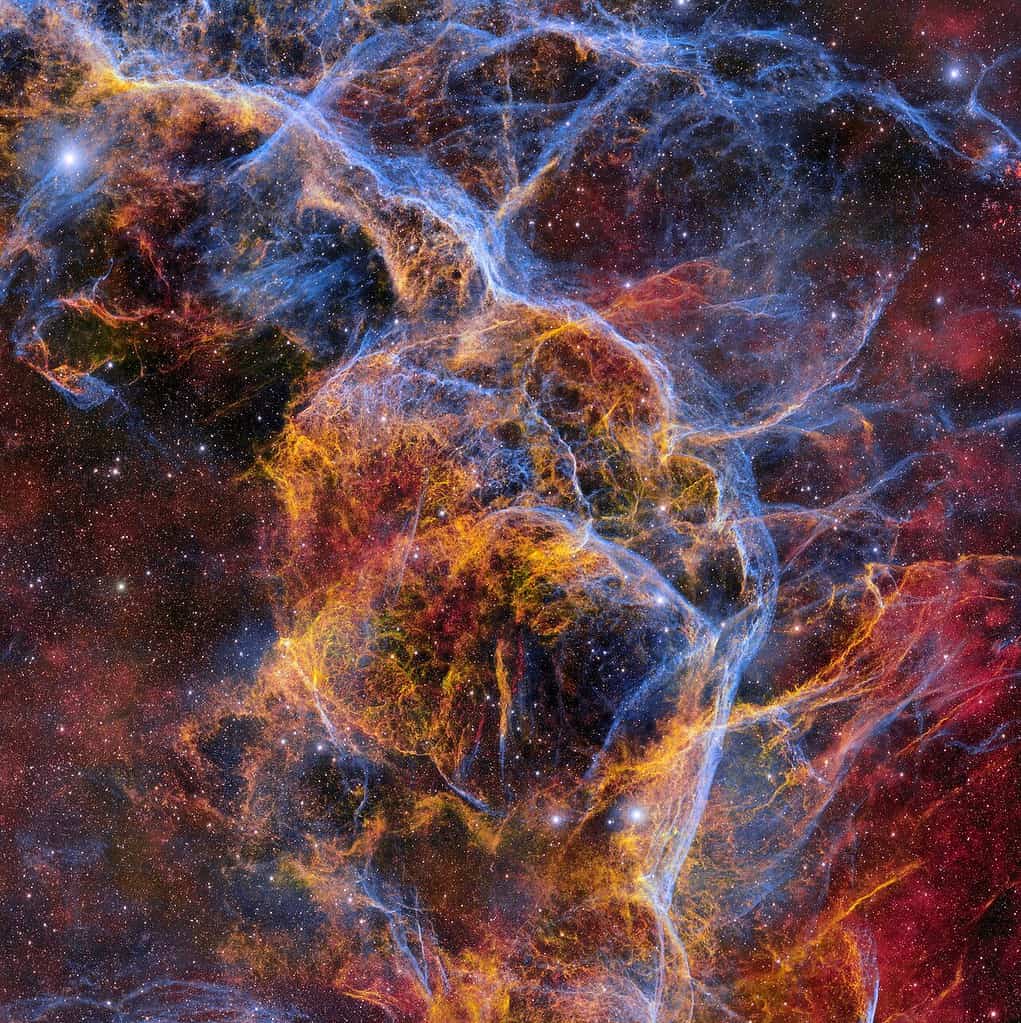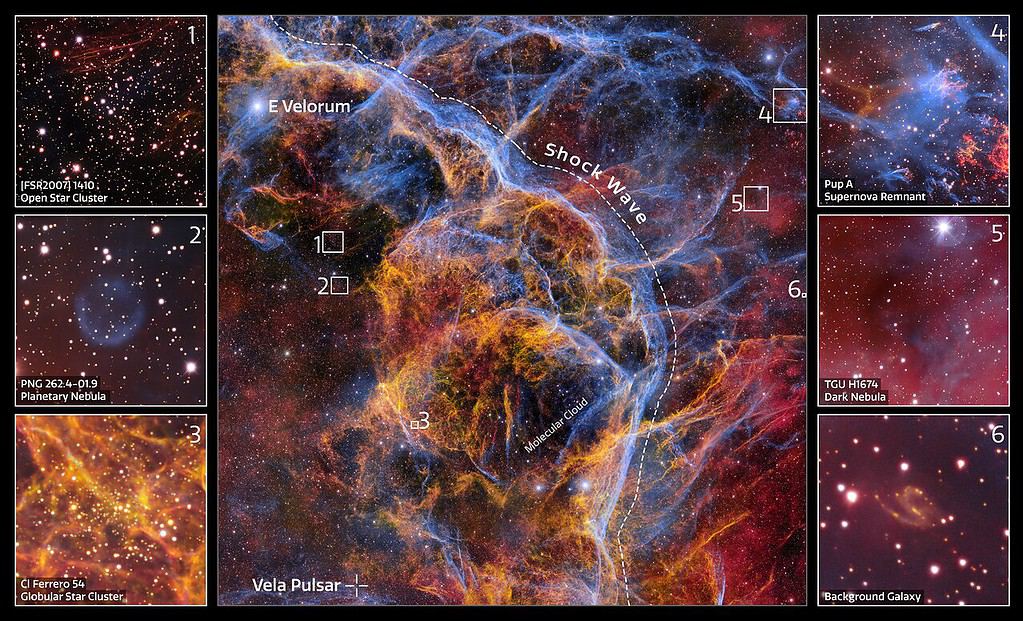Some space images have become timeless icons. Take the famous photo of the Pillars of Creation, or Hubble’s Deep Field Image, for instance — this colorful image of the Vela Supernova Remnant can stand with the best of them.

Supernova goes boom
The Vela Supernova Remnant lies some 800 light years away from us and is one of the closest such remnants to Earth. It is what’s left behind by a supernova, one of the largest and most destructive phenomena in the known universe. In this type of eruption, a star violently ejects its outer layers while its core collapses, forming a dense neutron star remnant. In the case of Vela, this took place some 11,000 years ago, when humans were just settling down and starting to build settlements.
When the star erupted, it released a massive shockwave that left behind a similarly massive trail as it passed through all the matter in its path. To get a sense of just how enormous this structure is, it’s a whopping 100 light-years across. Even though it’s so far away, it appears in our night sky with a diameter 20 times bigger than the moon. So, what we have here is the huge trail left behind by an explosion of cosmic scale.
The hot, pressurized gas pushed away everything in its path, leaving behind the colored tendrils we see in the image. But that’s not all. Although the star erupted so spectacularly, it didn’t disappear. It left behind a “zombie star”.
Neutron star

Sure, it’s no longer a star in the traditional sense (it doesn’t create heat and light anymore), but the remaining matter collapsed into what is called a neutron star, one of the densest objects in the universe.
This neutron star has around the same mass as the sun, despite being only a few kilometers across — while the Sun is 1.4 million kilometers across. A single teaspoon of matter from such a neutron star would weigh about 10 million tons or as much as 2.5 million elephants.
This particular neutron star is a pulsar — a highly magnetized, rotating star that emits beams of electromagnetic radiation from its magnetic poles. The Vela Pulsar, which you can still see in the lower left corner of this image, is relatively dim and hard to distinguish from its much brighter neighbors. It’s spinning wildly fast, 11 times per second, still recoiling from the supernova. Imagine an object the mass of the sun, only as big as a mountain, rotating every 0.09 seconds. The cosmos creates some amazing things.
Dark energy camera
The image was taken with the Dark Energy Camera (DECam), one of the best wide-field imaging instruments astronomers have available. The camera is mounted on the US National Science Foundation’s Victor M. Blanco telescope at the Cerro Tollolo Inter-American Observatory in Chile.
The different colors in the image were created by filters on the camera. Each filter collects a specific color of light. Astronomers took multiple photos thusly and then overlaid them on top of each other. This results in a huge and very detailed photo; in fact, this is the largest DECam photo, at 1.3 gigapixels. For comparison, that’s 1300 megapixels, and the average smartphone camera has between 12 and 48 megapixels.
More than just being a galactic curiosity, this sighting is important because it offers insight into the life cycle of stars, the formation of neutron stars and pulsars, and the dynamics of supernova explosions. Like other classic space images, it contributes to our understanding of the universe’s evolution and composition — while also being really cool to look at.



